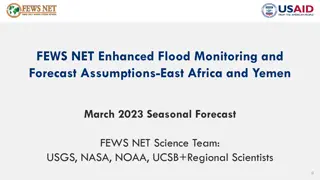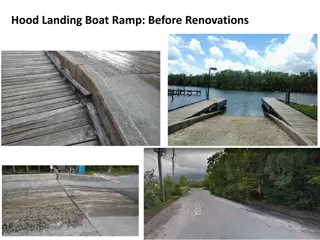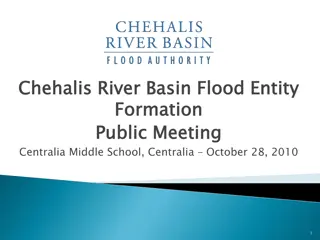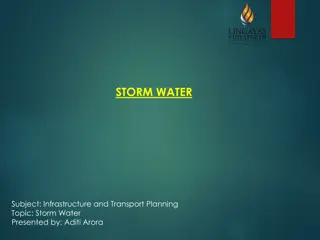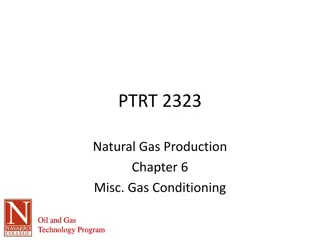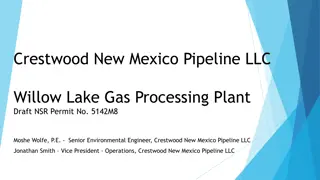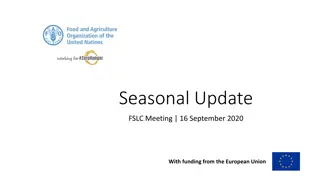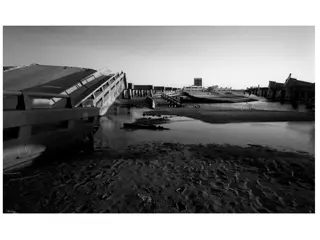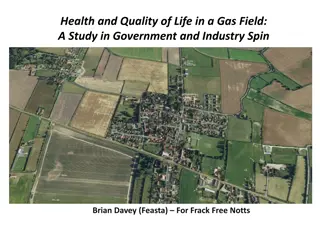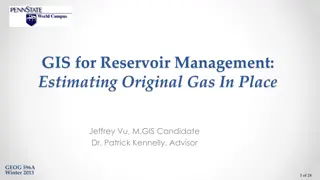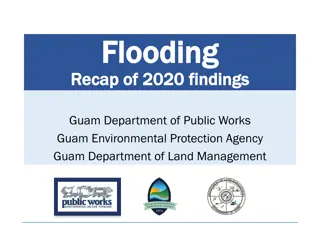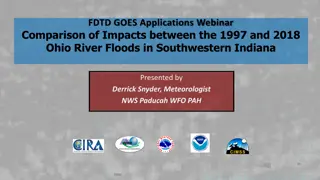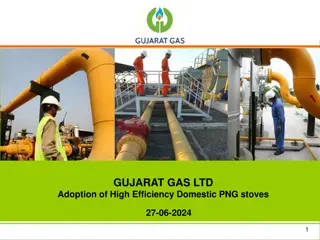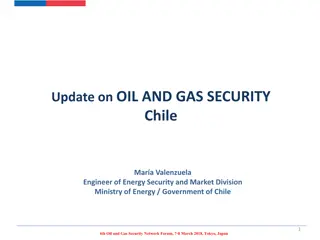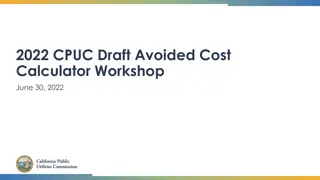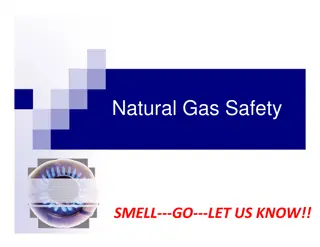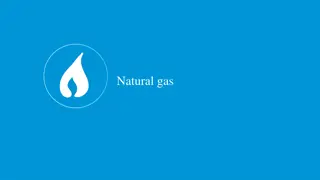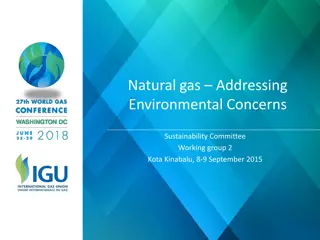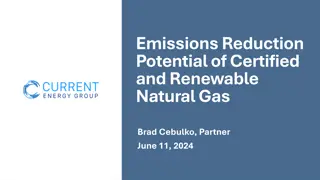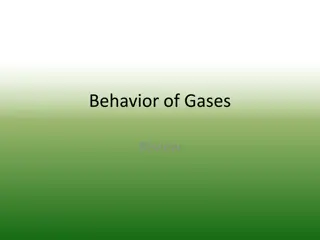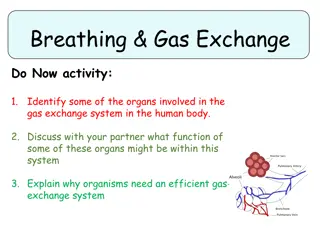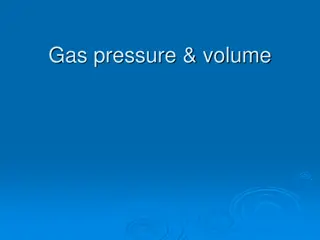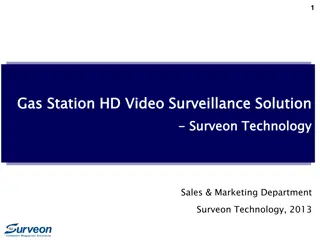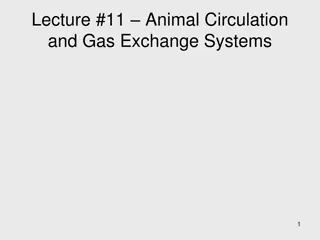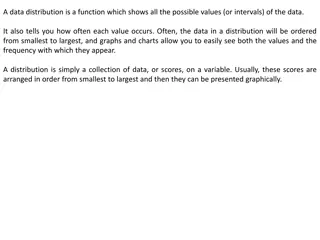Managing Risks of Flooding in Natural Gas Distribution Systems
Understanding the risks posed by flooding to natural gas distribution systems is crucial for effective planning, risk assessment, and emergency preparation. Water intrusion, submergence of gas meters, dislocation of distribution mains, and damage to facilities are potential consequences. Infiltration risks vary based on system integrity, while above-ground facilities face challenges in functioning post-flood and maintaining integrity. Risk management strategies encompass flash flooding, river flooding, and water main breaks, with advisory bulletins urging preventive measures against snow and ice-related stresses.
Download Presentation

Please find below an Image/Link to download the presentation.
The content on the website is provided AS IS for your information and personal use only. It may not be sold, licensed, or shared on other websites without obtaining consent from the author. Download presentation by click this link. If you encounter any issues during the download, it is possible that the publisher has removed the file from their server.
E N D
Presentation Transcript
The Risks T The Risks of Flooding to a Natural Gas Distribution System
Flood Planning Risk Assessment Design Element Practices and Considerations Flood Emergency Preparation and Coordination Post Flood Recovery Issues
Risk Assessments Water Intrusion and infiltration into the system Submergence of customers gas meters Possible dislocation and exposure of sections of a distribution main due to road destruction and earth-shifting Damage to above ground facilities Regulator Station Valve Pipe hanging on Structures
Risk Assessment Infiltration Generally a flood that does not cause a rupture of a gas distribution system will not damage buried gas lines. Gas pressure will generally be great enough to prevent infiltration and should not be shut down.
Risk Assessment Above Ground Facilities Submergence Customers Meters and Regulating Station Can it still function?
Risk Assessment Above Ground Facilities Damage Regulator Station Hairpin / Valve Pipe hanging on Structures
Risk Assessment Pipe Exposures Integrity of Pipe Public Safety
Risk Management Flash Flooding River Flooding Water Main Break
Flash Flooding Wash Outs Flooding of Facilities Regulator Stations Customer Meters
Advisory Bulletin (ADB) ADB-2016-03 Owners and Operators of Petroleum Gas and Natural Gas Facilities in Areas subject Heavy Snowfall or Abnormally Icy Weather Advises owner and operators of the need to take appropriate steps to prevent damage to pipeline facilities from accumulate snow or ice. Past event on natural gas distribution system facilities appear to have been related to either stress and ice or the malfunction of pressure control equipment due to ice blockage of pressure control equipment vents.
River Flooding Winter Thaw Threats can vary based on time of year
Advisory Bulletin (ADB) ADB-2019-04 Water Crossings & Area Prone to Flooding PHMSA issued an advisory bulletin to remind all owners and operators of gas and hazardous liquid pipelines of the potential for damage to pipeline facilities caused by severe flooding and actions that operators should consider taking to ensure the integrity of the pipelines in the event of flooding, river scour, and river channel migration.
Safety-Related Condition (192.23) Unintended Movement or Abnormal Loading by Environmental Causes which could affect the Serviceability or Structural Integrity of the Pipeline
Design Element Practices and Considerations Pressure Regulating Facilities Water Intrusion/Inflitration Bridge Crossing Critical Facilities Design and Review
Flood Emergency Preparation and Coordination Incident Command System Resource Allotment Response Plan Flood Emergency Preparation and Coordination Checklist
Post Flood Recovery Issues Tracking Impacted Customers Meters and Regulators Guidance to Customers Post-Recovery
Tracing Impacted Customers How to track? Utilize No Gas Procedures Turn on process is much more staggered than a traditional no gas so interaction with your CIS is critical in tracking customers
Customer Meters and Regulation Replace or Reuse Full Submergence Replace --
Guidance to Customers Gas Service to a customer s premise not turned back on unless all submerged appliances, regulators and control devices have been inspected by a qualified person and replaced or repaired as necessary. As a utility our company has chosen to not accept the role qualified person to inspect appliance
Conclusion Response Plan Share Knowledge among Operating areas


